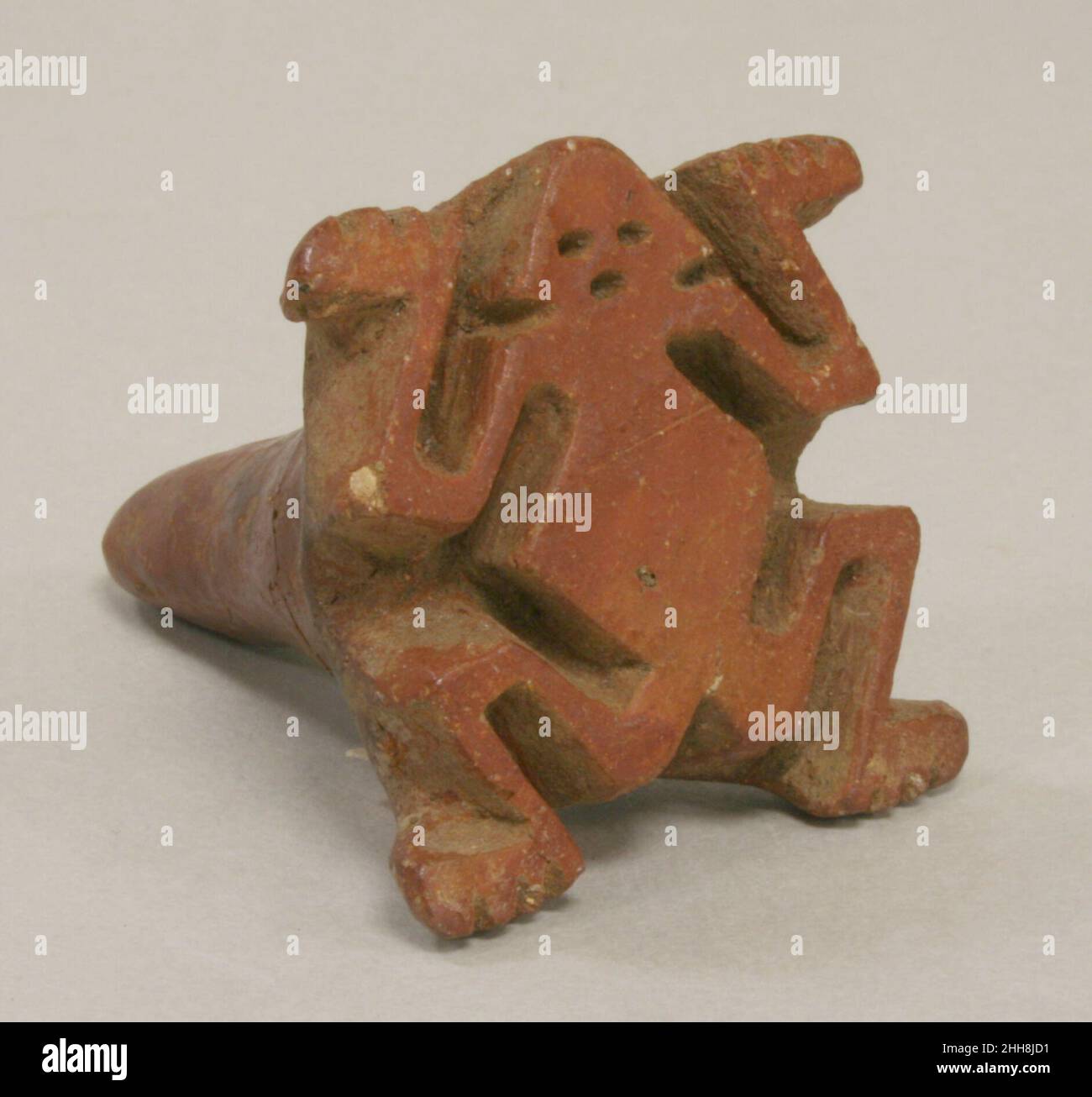Figure Stamp 1st–7th century Atlantic Watershed Ceramic stamps are found in Costa Rican burials, suggesting that their importance extended beyond utilitarian. Much speculation has been made with regard to the material that these stamps were intended to imprint, including paper, textiles, and the human body. The curved shape of the printing surface supports the function of body painting most strongly. This theory is reinforced by the presence of stamp motifs on Costa Rican ceramic figure sculpture. The designs of the stamps can be divided into two categories, those that mimic the geometricity o

Image details
Contributor:
MET/BOT / Alamy Stock PhotoImage ID:
2HH8JD1File size:
9.5 MB (190.8 KB Compressed download)Releases:
Model - no | Property - noDo I need a release?Dimensions:
1879 x 1759 px | 31.8 x 29.8 cm | 12.5 x 11.7 inches | 150dpiDate taken:
21 January 2022More information:
This image is a public domain image, which means either that copyright has expired in the image or the copyright holder has waived their copyright. Alamy charges you a fee for access to the high resolution copy of the image.
This image could have imperfections as it’s either historical or reportage.
Figure Stamp 1st–7th century Atlantic Watershed Ceramic stamps are found in Costa Rican burials, suggesting that their importance extended beyond utilitarian. Much speculation has been made with regard to the material that these stamps were intended to imprint, including paper, textiles, and the human body. The curved shape of the printing surface supports the function of body painting most strongly. This theory is reinforced by the presence of stamp motifs on Costa Rican ceramic figure sculpture. The designs of the stamps can be divided into two categories, those that mimic the geometricity of textile structure and those that do not. The frog stamp, with the angular lines of an amphibian, falls into the category of textile imagery, whereas the more fluid depiction of the serpent is derived from a more naturalistic source.. Figure Stamp 698256